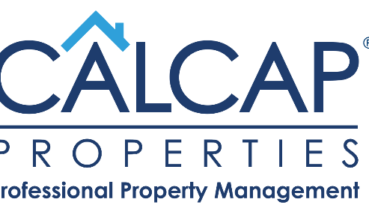In today’s dynamic property management landscape, success hinges on balancing rapid growth with a dedication to quality service. CALCAP Properties stands out as a rising star in this secto...
Florida Housing Market Cools Without Crashing Amid Post Pandemic Shift




Florida’s real estate market may no longer be grabbing headlines for record-breaking growth, but that does not mean it is in decline. According to Tim Weisheyer, President of Florida Realtors, the state is undergoing a long-overdue correction.
“Florida was on a major increase pre-pandemic, and the pandemic only accelerated that growth with new residents moving to the state,” Weisheyer explains.
In a candid interview, he pushes back against the narrative of a market in trouble, arguing that what Florida is experiencing is not a crash but a return to normalcy following several years of exceptional and unsustainable expansion.
The Pandemic Migration Effect
During COVID-19, Florida became a magnet for Americans seeking escape from lockdowns. “People from states on lockdown looked at Florida and said, ‘We can go down there. We can still go outside, go to beaches, transact business, go to restaurants,'” Weisheyer explains. This migration surge created unprecedented demand in an already growing market.
What many headlines now mischaracterize as a market decline is actually the natural leveling off after this exceptional period. “Because our market went up so fast, it looks like we’re falling fast, but that’s not accurate,” Weisheyer emphasizes. “If you look at the trend line, we’re in a perfect position, maintaining a healthy and robust market.”
A Tale of Two Markets: Single-Family Homes vs. Condominiums
Weisheyer highlights a critical distinction that national headlines often miss: Florida has two very different real estate markets operating simultaneously.
Single-family homes, representing approximately 80% of Florida’s housing inventory, are in what Weisheyer describes as a “perfectly normalized market” with about four months of supply, a healthy balance between buyers and sellers.
“We’ve shifted from an extremely hot sellers market to more equilibrium,” he notes. “Buyers now have more options, which is beneficial, and there’s opportunity for meaningful negotiations, ensuring both parties operate on an equal playing field.”
The condominium market, however, tells a different story. Making up roughly 20% of Florida’s real estate, condos are experiencing higher inventory levels at around 10 months of supply – creating what Weisheyer describes as “more of a buyer’s market, for sure.”
He cautions against misinterpreting headlines: “When you see reports discussing 10 months supply of inventory in Florida, that applies only to condominiums, just one product type representing only one-fifth of our entire real estate market.”
The Surfside Effect: How Tragedy Reshaped the Condo Market
The 2021 collapse of the Surfside tower in southeast Florida fundamentally changed Florida’s condominium landscape, triggering significant reforms including mandatory “milestone inspections” for buildings of certain sizes.
“What came to light is that numerous condominium associations hadn’t been raising their assessments sufficiently to keep pace with rising maintenance costs, let alone insurance,” Weisheyer explains with notable concern in his voice.
This revelation created uncertainty in the condominium market. Potential buyers now worry about sudden assessment increases “inheriting a substantial increase today, rather than the gradual incremental increases that should have occurred over time.”
To address these concerns, Florida Realtors successfully advocated for a transparency law requiring sellers and associations to provide comprehensive documentation to potential buyers, including minutes from association meetings for the prior 12 months.
“We want homeowners and potential homebuyers to have complete knowledge of what they’re getting into,” Weisheyer emphasizes, his commitment to consumer protection evident.
Insurance Reform: The Fraud Factor
Perhaps most surprising in Weisheyer’s insights is his explanation of Florida’s previously sky-high insurance premiums which weren’t primarily due to hurricane risks as commonly believed.
“Hurricanes can be planned for, predicted, and modeled,” Weisheyer explains. The real culprit? Insurance fraud.
With remarkable clarity, Weisheyer details how Florida Realtors worked to eliminate two key contributors to insurance fraud: the “assignment of benefits” and “one-way attorney fees.” The first allowed third parties to take over homeowners’ insurance claims, often leading to inflated claims. The second guaranteed compensation for attorneys regardless of case outcomes, incentivizing lawsuits against insurance companies.
The results of these reforms have been dramatic: “We now have the lowest year-over-year increase of insurance premiums in the entire United States, only a 1% increase,” Weisheyer reports with evident pride. “We’ve attracted 12 new insurance companies back into Florida, and the reinsurance market has now re-entered the state.”
The Data Control Debate
When discussing the national controversy around listing transparency and pocket listings, Weisheyer offers a refreshingly straightforward assessment: much of the debate boils down to “a competition for control of data.”
While acknowledging valid arguments on both sides, Weisheyer emphasizes that Florida Realtors remains focused on consumer interests: “Our core position is that we always work for what’s in the best interest of the consumer. Creating opportunities for realtors to collaborate and cooperate with one another, while maintaining transparency, produces the strongest marketplace.”
With nearly three decades in real estate, Weisheyer brings historical perspective to current debates: “The conversation happening now doesn’t really need to be much different than what we’ve navigated in the past.”
He distinguishes the Realtor association’s approach from others: “Everyone else will argue about what’s in their best interest for personal profitability, while the realtor association advocates for what benefits individual consumers and the general marketplace.”
Looking Forward: Stability and Transparency
As Florida’s real estate market continues to normalize, Weisheyer remains optimistic about its fundamental strength. The combination of regulatory reforms, increased transparency, and a return to balanced market conditions positions Florida well for sustainable growth.
For potential buyers concerned about the condominium market, the new transparency laws should provide greater confidence. And for the single-family home market, which represents the vast majority of Florida’s real estate, conditions remain healthy and stable.
“We’re still in a very healthy and robust market,” Weisheyer concludes with conviction, emphasizing that Florida’s current real estate landscape represents normalization rather than decline, a return to sustainable market conditions after years of exceptional growth.
Similar Articles
Explore similar articles from Our Team of Experts.


In a recent interview, Igor Zhizhin, Principal of American Street Capital, a national mortgage banking firm specializing in securitized non-recourse debt, shared valuable insights into the c...


The path to creating affordable housing in one of America’s most exclusive zip codes requires both creativity and persistence, according to Katie Casey, Executive Director of East Hamp...


When Luis Aurelio Diaz returned to Colombia in 2003 to take the helm of his father’s real estate development company, he faced a stark reality. The Colombian economy was recovering fro...


“Food waste in this country is actually responsible for three times more emissions than the entire airline industry… addressing food waste has a larger opportunity than EVs, recy...




